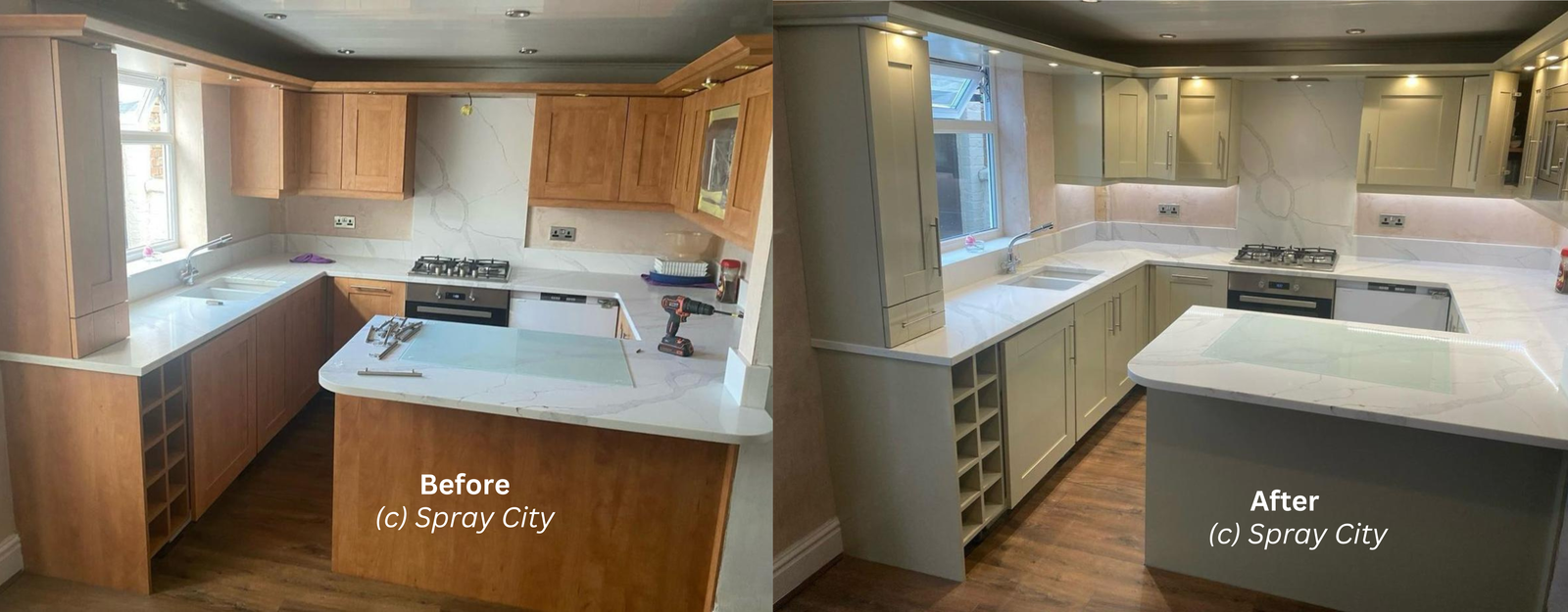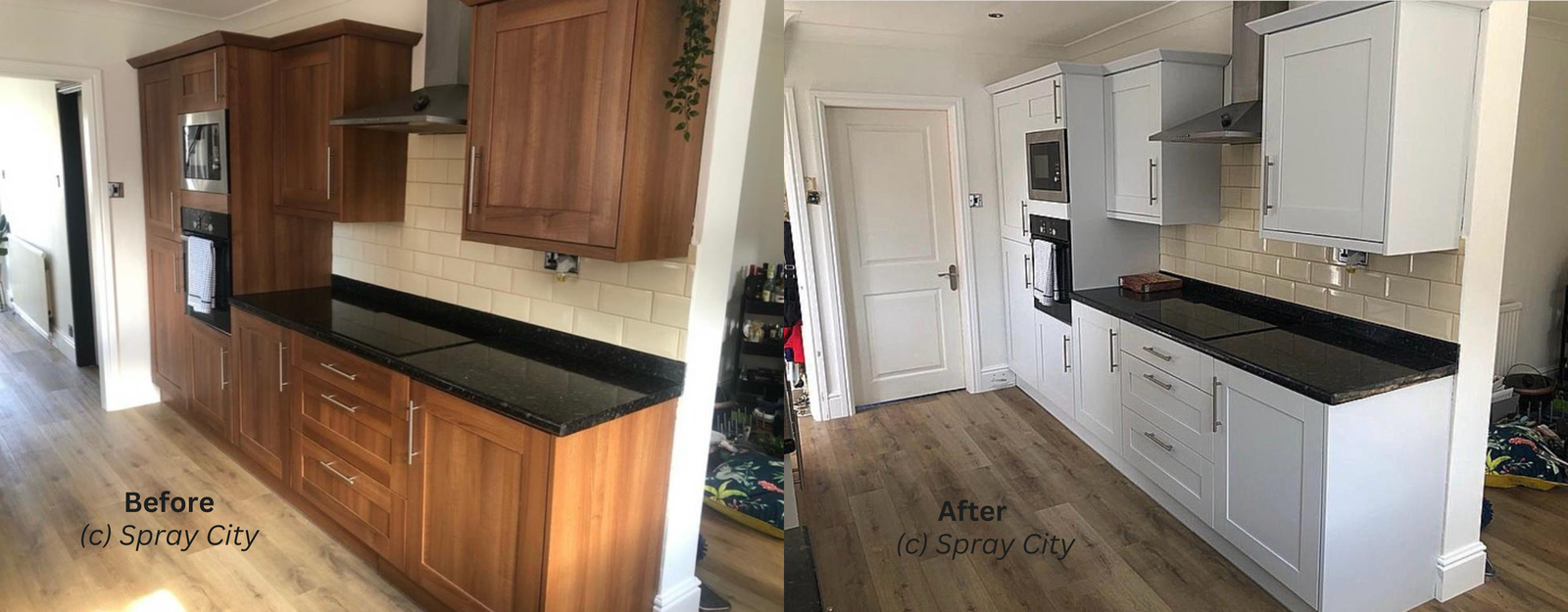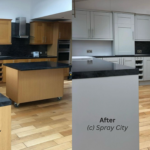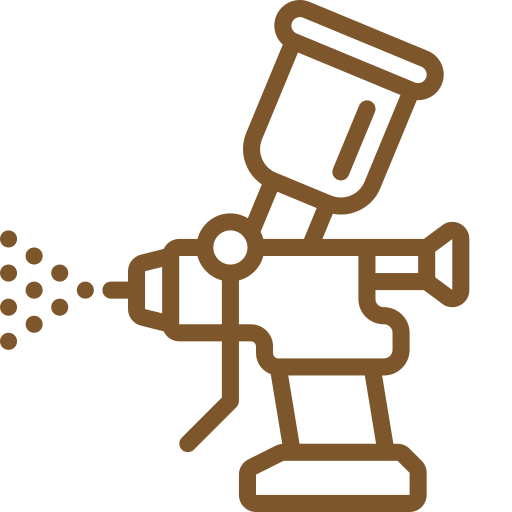Introduction
Sustainable spray painting is essential in the quest for a greener planet. In today’s environmentally conscious world, businesses and homeowners constantly seek ways to reduce waste and energy consumption.
While spray painting might not be the first thing that comes to mind when considering sustainability, it can actually play a significant role in reducing waste and energy consumption.
Advancements in technology and innovative practices have transformed spray painting into a more sustainable process. This article explores how sustainable spray painting can help reduce waste and energy consumption, ultimately contributing to a more eco-friendly and sustainable future.

The Environmental Impact of Traditional Painting Methods
Traditional painting methods, such as brush or roller application, often result in significant waste and higher energy consumption. These methods typically require multiple coats to achieve a uniform finish, leading to increased use of paint and other materials. Moreover, traditional painting can be labour-intensive and time-consuming, further escalating energy usage.
Additionally, conventional painting techniques often lead to overspray, where excess paint misses the target surface and becomes waste. This not only increases material costs but also contributes to environmental pollution. The disposal of leftover paint and cleaning solvents poses another environmental challenge, as these substances can contaminate soil and water sources.
The Advantages of Spray Painting
Spray painting offers several advantages over traditional methods, particularly in terms of efficiency and sustainability. Here are some key benefits:
1. Reduced Material Waste: Spray painting systems are designed to deliver a fine, even mist of paint, ensuring that more paint adheres to the target surface. This precision reduces the amount of paint needed, minimising waste and cutting down on material costs.
2. Faster Application: Spray painting is significantly faster than brush or roller application. A job that might take several hours with a brush can often be completed in a fraction of the time with a spray gun. This efficiency not only saves time but also reduces energy consumption.
3. Consistent Finish: Spray painting provides a smooth, even finish that is difficult to achieve with traditional methods. This consistency means fewer coats are required, further reducing paint usage and energy expenditure.
4. Versatility: Spray painting can be used on a variety of surfaces and in numerous settings, from automotive and industrial applications to residential and commercial projects. This versatility makes it an ideal choice for many different industries.

Technological Innovations in Spray Painting
Recent technological advancements have further enhanced the sustainability of spray painting. Here are some notable innovations:
- High Volume Low Pressure (HVLP) Systems: HVLP spray systems use a high volume of air at low pressure to atomize the paint. This results in a finer spray, reducing overspray and improving transfer efficiency. HVLP systems are highly efficient, using less paint and generating less waste compared to traditional spray guns.
- Electrostatic Spray Painting: Electrostatic spray painting involves charging the paint particles and the target surface with opposite charges. The charged paint particles are attracted to the surface, resulting in a more even coating with minimal overspray. This method significantly reduces paint waste and ensures a high-quality finish.
- Automated Spray Systems: Automation has revolutionised the spray painting industry. Robotic spray systems can precisely control the amount of paint applied, ensuring consistent coverage and minimising waste. These systems are also more energy-efficient, as they can operate continuously with minimal downtime.
- Water-Based Paints: Traditional solvent-based paints contain harmful volatile organic compounds (VOCs) that contribute to air pollution and pose health risks. Water-based paints are a sustainable alternative to solvent-based paints. They emit lower levels of Volatile Organic Compounds (VOCs), which contribute to air pollution and have a smaller environmental footprint. Many paint manufacturers offer water-based spray paints in a wide range of colours and finishes. These paints provide the same high-quality results as solvent-based options while minimising environmental impact.

Contributions of Spray Painting to Reduced Energy Consumption
Energy consumption is a critical factor in the sustainability of any process. Spray painting offers several ways to reduce energy usage:
1. Rejuvenation over Replacement:
One of the most significant contributions of spray painting to sustainability is its ability to breathe new life into existing items. Instead of discarding furniture, appliances, or even entire structures due to worn-out paint or minor damage, a fresh coat of paint can provide a cost-effective and eco-friendly solution. This reduces the demand for new materials, lowers manufacturing emissions, and keeps perfectly usable items out of landfills.
For instance, giving a tired kitchen a facelift with a coat of spray paint eliminates the need to replace cabinets entirely. Similarly, refreshing a faded fence or outdoor furniture with paint extends their lifespan, preventing the need for premature disposal and replacement with new, resource-intensive products.
2. Precise Application Minimises Waste:
Spray painting offers a high degree of control and precision compared to traditional paint brushes and rollers. This targeted application minimises paint overspray and dripping, significantly reducing wasted paint. This translates to less paint production and disposal, lowering the environmental impact associated with paint manufacturing and post-use waste.
Furthermore, advancements in spray painting technology offer features like adjustable spray patterns and variable flow rates. These allow painters to tailor the application to the specific project, further minimising paint waste and promoting efficient use of resources.

3. Durable Finishes Reduce Long-Term Consumption:
High-quality spray paints are formulated to provide long-lasting, durable finishes. This translates to fewer repainting needs over time. Less frequent repainting translates to a significant reduction in overall paint consumption and associated environmental impact.
For instance, using a high-performance paint specifically designed for exterior applications on a house can significantly extend the lifespan of the paint job compared to a standard option. This reduces the frequency of repainting needed, minimising paint use and the environmental impact associated with production and disposal cycles.
4. Energy-Efficient Applications:
Spray painting offers advantages in terms of energy efficiency as well. Compared to traditional painting methods, spray painting often requires less drying time, particularly when using water-based paints. This translates to a reduced need for heat lamps or dehumidifiers to accelerate the drying process, leading to lower energy consumption at the project site.
Additionally, some spray paints boast quick-drying formulas that allow for faster project completion. This minimises the time required for heating or cooling in controlled environments, further contributing to energy savings.
5. Optimised Workflows:
Automated spray systems can be integrated into production lines, optimising workflows and reducing idle times. This streamlining of processes helps conserve energy by minimising the time equipment needs to be in operation.
6. Energy-Efficient Equipment:
Modern spray painting equipment is designed with energy efficiency in mind. For example, HVLP systems use less compressed air compared to traditional spray guns, reducing the energy required for air compression.

The Role of Spray Painting Companies in Promoting Sustainability
Spray painting companies play a crucial role in promoting sustainability. By adopting and advocating for eco-friendly practices, they can lead the way in reducing waste and energy consumption. Here are some sustainable spray painting steps that can be taken:
- Invest in Advanced Equipment: Upgrading to modern, energy-efficient spray systems can significantly reduce waste and energy usage. Companies should consider investing in HVLP or electrostatic spray guns, as well as automated systems, to enhance sustainability.
- Use Eco-Friendly Paints: Switching to water-based or low-VOC paints can greatly reduce the environmental impact of spray painting. Companies should prioritise the use of these paints in their projects.
- Implement Best Practices: Training employees on best practices for spray painting can help minimise waste and optimise efficiency. This includes proper surface preparation, correct spray gun handling, and efficient workflow management.
- Educate Clients: Spray painting companies should educate their clients on the benefits of sustainable practices. By promoting the use of eco-friendly paints and efficient application methods, companies can help clients make more informed choices that benefit the environment.
- Safe Paint Disposal: Leftover paint should be disposed of responsibly according to local regulations. Look for community hazardous waste collection events or consult your local council for proper disposal guidelines.
- Monitor and Report: Regularly monitoring and reporting on waste and energy consumption can help companies track their progress and identify areas for improvement. This transparency also demonstrates a commitment to sustainability, which can enhance a company’s reputation.

The Spray City Difference
At Spray City, we have ten years of experience in providing spray painting services for homeowners across the UK. Our skilled technicians are trained in the latest spraying techniques and use state-of-the-art equipment to ensure flawless results every time. You can trust us to deliver exceptional quality and craftsmanship that enhances the beauty and value of your home and property.
Contact us today for a free quote and let us help you transform your home into a mural that showcases your personal style and creativity!
For a free no-obligation quote, more information about your unique kitchen spraying need, about Spray City, and our different spraying services, you can reach out to us via our Contact page or contact us via Facebook, Whatsapp, Instagram, Call, or Email.
Also, you can read what what our clients have to say about us on Google or visit our Youtube.

Conclusion
Spray painting, when done sustainably, can significantly reduce waste and energy consumption, contributing to a greener and more eco-friendly future. By leveraging technological advancements and adopting best practices, spray painting companies can lead the way in promoting sustainability within their industry. As more businesses and individuals recognize the benefits of sustainable spray painting, we can expect to see a positive impact on both the environment and the economy.
















